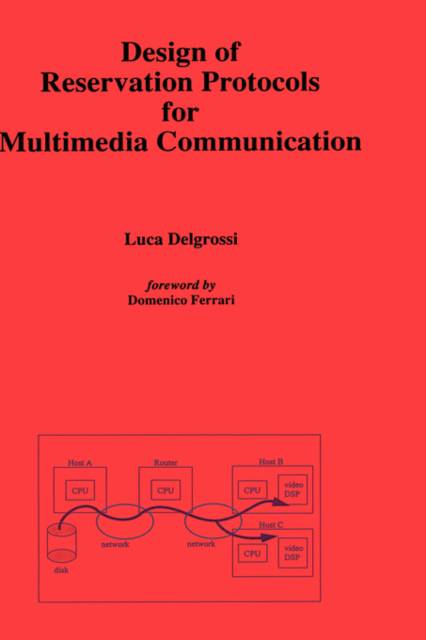
- Retrait gratuit dans votre magasin Club
- 7.000.000 titres dans notre catalogue
- Payer en toute sécurité
- Toujours un magasin près de chez vous
- Retrait gratuit dans votre magasin Club
- 7.000.0000 titres dans notre catalogue
- Payer en toute sécurité
- Toujours un magasin près de chez vous
184,45 €
+ 368 points
Format
Description
The advent of multimedia technology is creating a number of new problems in the fields of computer and communication systems. Perhaps the most important of these problems in communication, and certainly the most interesting, is that of designing networks to carry multimedia traffic, including digital audio and video, with acceptable quality. The main challenge in integrating the different services needed by the different types of traffic into the same network (an objective that is made worthwhile by its obvious economic advantages) is to satisfy the performance requirements of continuous media applications, as the quality of audio and video streams at the receiver can be guaranteed only if bounds on delay, delay jitters, bandwidth, and reliability are guaranteed by the network. Since such guarantees cannot be provided by traditional packet-switching technology, a number of researchers and research groups during the last several years have tried to meet the challenge by proposing new protocols or modifications of old ones, to make packet-switching networks capable of delivering audio and video with good quality while carrying all sorts of other traffic. The focus of this book is on HeiTS (the Heidelberg Transport System), and its contributions to integrated services network design.
The HeiTS architecture is based on using the Internet Stream Protocol Version 2 (ST-II) at the network layer. The Heidelberg researchers were the first to implement ST-II. The author documents this activity in the book and provides thorough coverage of the improvements made to the protocol. The book also includes coverage of HeiTP as used in error handling, error control, congestion control, and the full specification of ST2+, a new version of ST-II. The ideas and techniques implemented by the Heidelberg group and their coverage in this volume apply to many other approaches to multimedia networking.
The HeiTS architecture is based on using the Internet Stream Protocol Version 2 (ST-II) at the network layer. The Heidelberg researchers were the first to implement ST-II. The author documents this activity in the book and provides thorough coverage of the improvements made to the protocol. The book also includes coverage of HeiTP as used in error handling, error control, congestion control, and the full specification of ST2+, a new version of ST-II. The ideas and techniques implemented by the Heidelberg group and their coverage in this volume apply to many other approaches to multimedia networking.
Spécifications
Parties prenantes
- Auteur(s) :
- Editeur:
Contenu
- Nombre de pages :
- 286
- Langue:
- Anglais
Caractéristiques
- EAN:
- 9780792396697
- Date de parution :
- 31-12-95
- Format:
- Livre relié
- Format numérique:
- Genaaid
- Dimensions :
- 156 mm x 234 mm
- Poids :
- 612 g

Les avis
Nous publions uniquement les avis qui respectent les conditions requises. Consultez nos conditions pour les avis.






